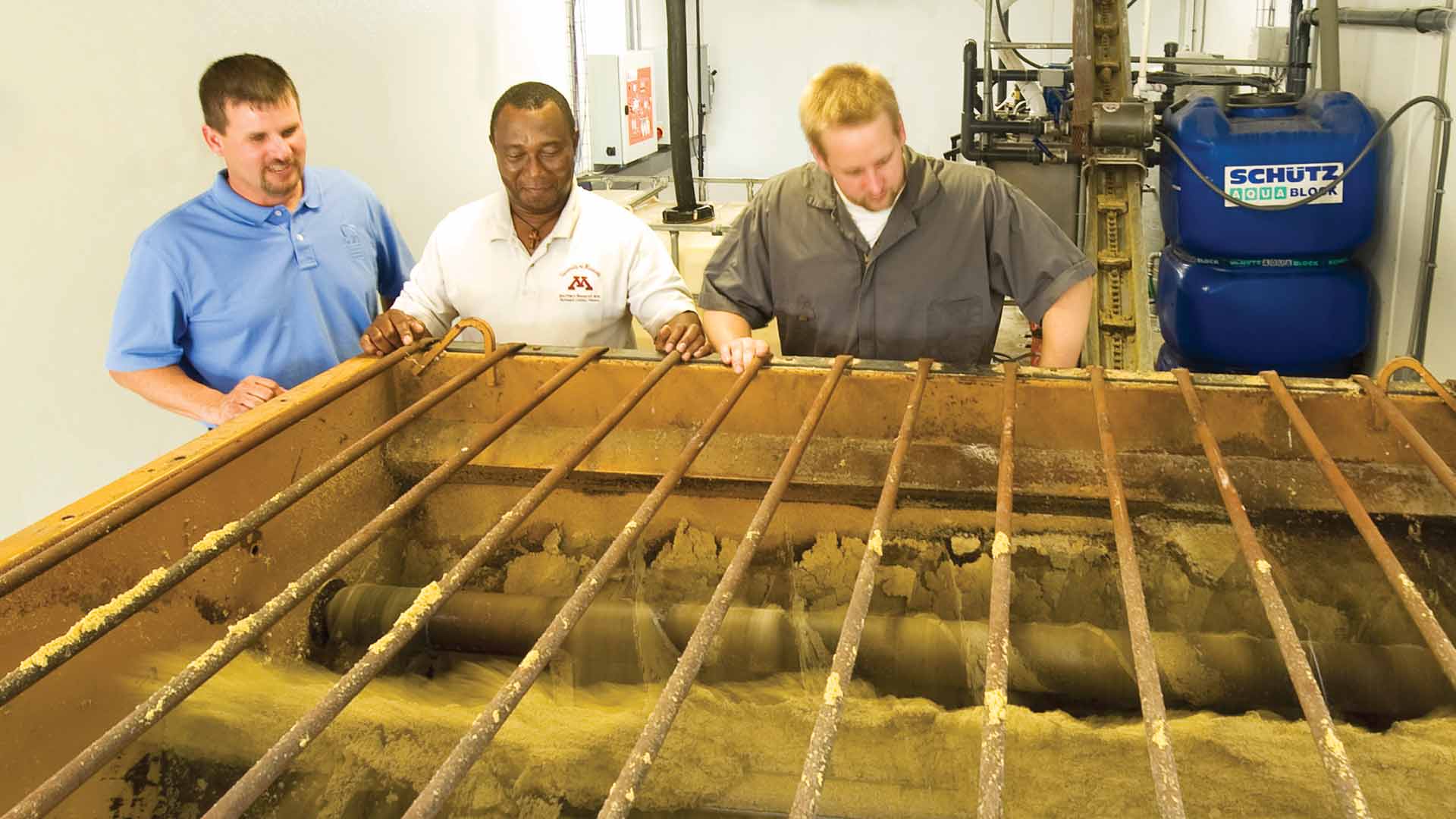— by Liz Morrison
photos by Rolf Hagberg
Improving livestock feed with the coproducts left over during agricultural processing is a win-win for Minnesota’s agricultural industry. Livestock farmers find new nutritional, lower cost feed options. The agricultural processing industry finds ways to add value to the products left over during processing.
AURI does many feed trials, which examine the nutritional impact of various feed options. These help Minnesota livestock producers evaluate if and when to take advantage of the state’s abundant supplies of alternative feeds: nutritious, low-cost ingredients like distillers grains, glycerin and other agricultural processing. AURI trials “validate opportunities to use undervalued coproducts” in animal diets, says Al Doering, AURI coproducts scientist.
Dried distillers grains with solubles (DDGS), for example, are a coproduct of ethanol production, and also serve to lower the cost of feeding cattle, swine and poultry, says Jen Wagner-Lahr, AURI senior director of innovation. “This is especially important when you see where corn and soybean prices are going.” Rising grain prices “make it more difficult for livestock producers to maintain healthy profit margins.” The profit squeeze has intensified with the 2012 drought, which has devastated the U.S. corn crop and pushed grain prices to historic highs, she adds.
AURI-sponsored research often results in new uses or markets for Minnesota feedstuffs, too, Doering says. Take AURI studies on ensiling sugar beet tailings, which identified a higher-value use for the sugar industry coproduct. Likewise, recent trials of low oligosaccharide soybean meal showed the value of using the specially-processed feed in baby pig diets. The research is expected to open up new markets in Asia.
The feed trials also help Minnesota’s renewable fuel manufacturers “strengthen their coproduct sales,” Wagner-Lahr says. In the ethanol industry, for example, sales of wet and dried distillers grains can account for up to one-third of plant revenues. Making use of these coproducts is essential to the profitability of the business. The trials also help ethanol producers understand livestock growers’ need for consistent, high-quality feed ingredients, adds Sally Noll, a University of Minnesota livestock scientist, who has worked with AURI on many feed trials.
AURI often partners with the University of Minnesota and state grower groups to carry out feed studies. “AURI is a source of unbiased information,” says AURI’s Doering, who is also a sheep producer and former livestock production specialist. “People very much respect the results coming out of these trials.”
Here’s a brief look at some recent feed studies that will benefit Minnesota’s three largest livestock sectors, as well as renewable fuel makers.
— — — —
Talkin’ Turkey
Feed trials will help growers include more DDGS in turkey diets without affecting litter quality.
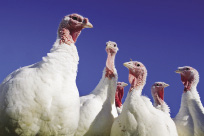 Livestock sector: Turkeys.
Livestock sector: Turkeys.
Coproduct: Dried corn distillers grains with solubles (DDGS), an ethanol coproduct.
Background: Poultry producers often include 5% to 10% DDGS in livestock rations. But concerns about the effects of higher levels of DDGS on meat birds’ health and growth has limited usage, says Sally Noll, Ph.D., a University of Minnesota animal scientist, who led the research.
The problem: Higher levels of DDGS in turkey diets may cause an electrolyte imbalance in the birds, which results in loose droppings and wet bedding, or litter. Wet litter, in turn, can lead to footpad sores, leg ailments and higher mortality rates.
Study goal: To test how feeding turkeys more DDGS affected electrolyte balances, litter moisture, foot health, and weight gain. In two experiments at the University of Minnesota in St. Paul, turkeys were fed diets containing 20% DDGS or 20% DDGS plus 10% canola meal, another common alternative feed ingredient.
Partners: The studies were sponsored by AURI and the Minnesota Corn Research & Promotion Council.
Results: The first study compared the effects of three diet formulations on litter moisture and growth:
•a traditional corn-soybean meal diet;
•a corn-soybean meal diet plus 20% DDGS;
•and a corn-soybean meal diet plus 20% DDGS and 10% canola meal.
Three different amounts of chloride, an electrolyte mineral, were also added to the diets in order to evaluate the effects of higher electrolyte content on turkey growth.
The study found that adding DDGS or DDGS-plus-canola-meal to turkey diets increased litter moisture. Litter moisture also increased as chloride levels rose in all three diets.
In addition, the trials found that higher chloride levels increased feed conversion in one of the diets, the DDGS-plus-canola-meal ration. So turkeys had to eat more food to gain a pound of weight, compared to turkeys fed a diet lower in electrolytes. That’s a production disadvantage.
The second study looked in more detail at the effects of different chloride levels in the DDGS-canola meal diet. In this study, turkeys ate less feed when dietary chloride levels exceeded 0.22%, causing them to grow more slowly. Litter moisture increased with higher chloride level results in poorer footpad condition.
Conclusions: Growers can feed up to 20% DDGS in turkey diets and wet litter can be minimized by limiting chloride level. Alternatively, growers who are concerned about increased litter moisture can lower DDGS levels to 10% or 15% of the diet. Turkey growers feeding diets that include 20% DDGS and 10% canola meal should limit chloride levels in order to maintain feed intake and growth, and minimize wet litter.
Feed trials could help Minnesota’s swine industry use liquid ethanol coproducts, lowering production costs for both industries.
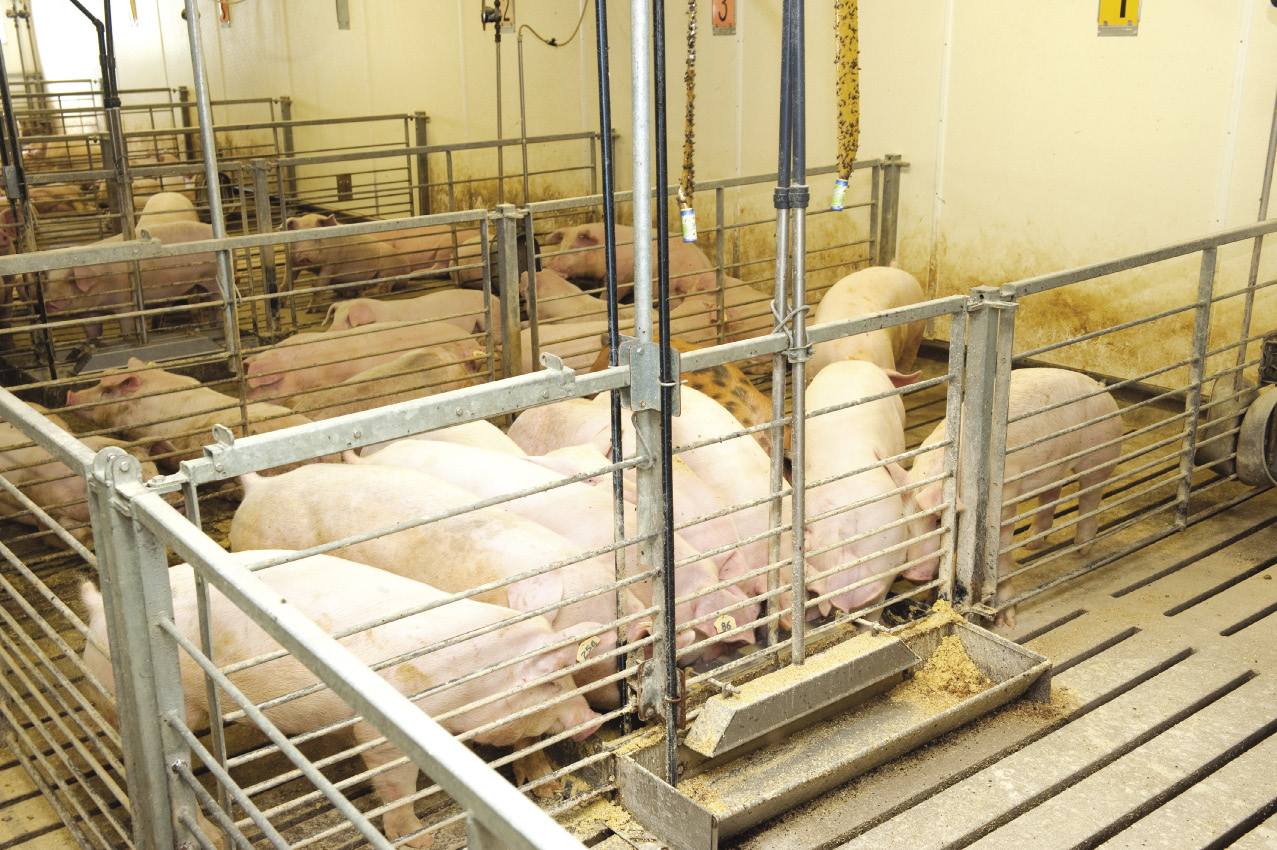 Livestock sector: Swine.
Livestock sector: Swine.
Coproducts: Wet corn distillers grains and liquid corn distillers solubles, ethanol coproducts.
Background: Distillers grains and distillers solubles must be dried for use in swine feed today, because most U.S. hog producers can’t handle wet or liquid feedstuffs. However, liquid swine feed handling systems are becoming popular in Canada and Europe, and interest is growing in this country, too, says Al Doering, AURI coproducts scientist.
The problem:Both ethanol manufacturers and hog producers are coping with prolonged periods of tight profit margins due to high corn prices. Drying distillers grains and solubles takes a lot of energy, raising

the cost of these feed ingredients. If pork producers could instead use wet distillers grains and liquid distillers solubles, both industries would save money and cut production costs.
Study goal: To test the value of wet distillers grains and corn solubles in the feed of grow-finish hogs. In trials at the University of Minnesota Southern Research and Outreach Center at Waseca, five groups of pigs will be fed diets containing different combinations of wet or dried distillers grains and solubles.
Partners: The study, led by University of Minnesota livestock scientist Sam Baidoo, Ph.D., is sponsored by AURI, the Minnesota Corn Research & Promotion Council, and the Minnesota Pork Board.
Outcome: Results will be available later this year.
— — — —
Safe and nutritious
Feed trials showed the renewable fuel coproducts did not promote E. coli in cattle.
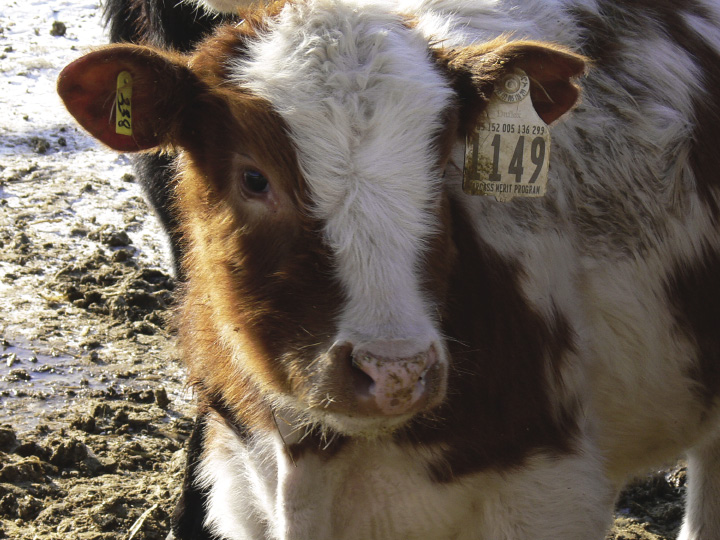 Livestock sector: Beef cattle.
Livestock sector: Beef cattle.
Coproducts: Dried distillers grains with solubles (DDGS), an ethanol coproduct; and glycerin, a biodiesel coproduct.
Background: Feeding distillers grains lowers production costs for cattle producers. Beef and dairy cows are the primary market for both wet and dried distillers grains, consuming about 80% of U.S. output.
The problem:Earlier research from Kansas State University suggested that adding DDGS to cattle feed increased the prevalence of E. coli O157:H7, a pathogen that can cause serious illness in humans. Previous
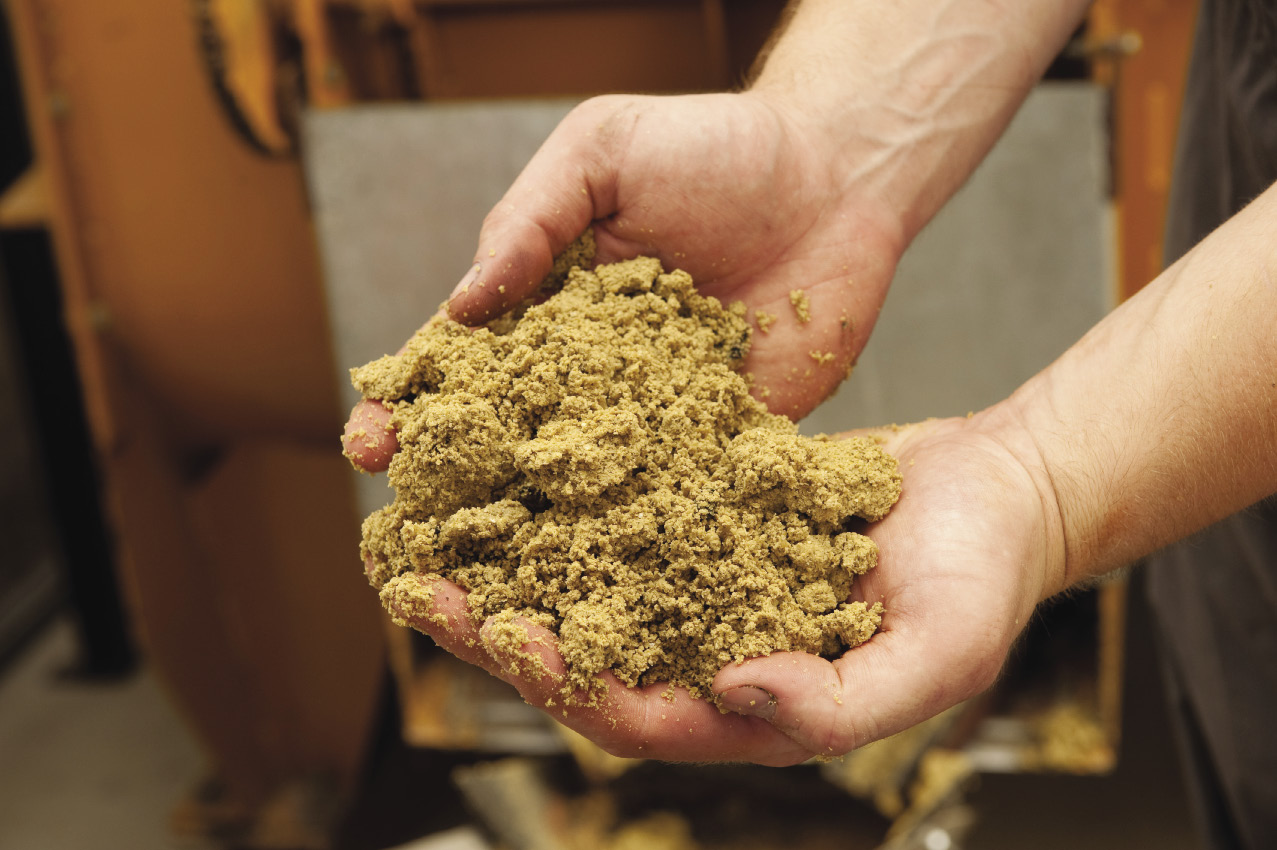
research also suggested that soy glycerin or less-processed grain could reduce the prevalence of E. coli in calves fed DDGS.
Study goal: To evaluate the effects of distillers grains, grain processing, and glycerin on the prevalence of E. coli O157:H7 in cattle. Two trials were carried out at the University of Minnesota and three trials were done at the University of Kansas.
Partners: The trials were led by livestock scientists Alfredo DiCostanzo, Ph.D., of the University of Minnesota and Jim Drouillard, Ph.D., of the University of Kansas. The research was sponsored by AURI and the Minnesota Corn Research & Promotion Council.
Results: Feed trials were performed on calves that were artificially inoculated with E. coli O157:H7, and calves that were naturally infected with the pathogen. Both groups were fed distillers grains. The artificially infected calves were also fed a combination of other dietary ingredients, including steam flaked corn, dry rolled corn, and soy glycerin.
Conclusions: The research showed no link between dietary ingredients and the incidence or prevalence of E. coli O157:H7, DiCostanzo says. In addition, the Minnesota research found that adding 10% soy glycerin to the diet boosted cattle growth rates by about 15% and improved feed handling.
Outcomes: Minnesota cattle producers can continue to feed distillers grains with confidence. In addition, cattle feeders can improve performance by adding 10% soy glycerin to cattle diets.
— — — —
The future of soybean meal
Leaders from across the soybean meal industry gathered at the Minnesota Soybean Growers Association recently to discuss how to enhance soybean protein production and utilization in Minnesota. Ag scientists, soybean processors and others in attendance discussed potential uses and nutritional benefits found in enhanced soybean meal products and defined potential areas of opportunity for this value-added product.

